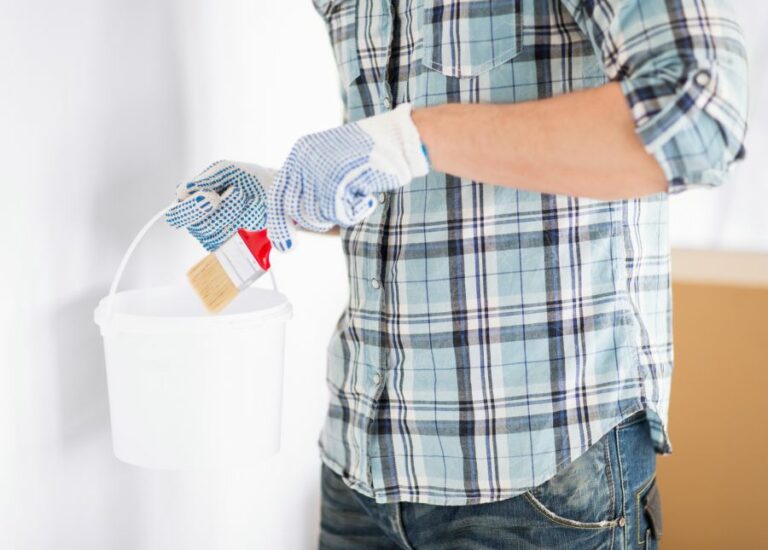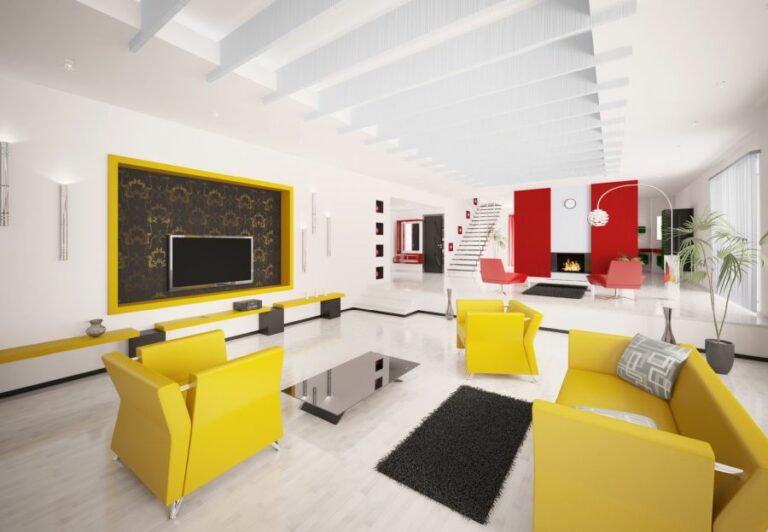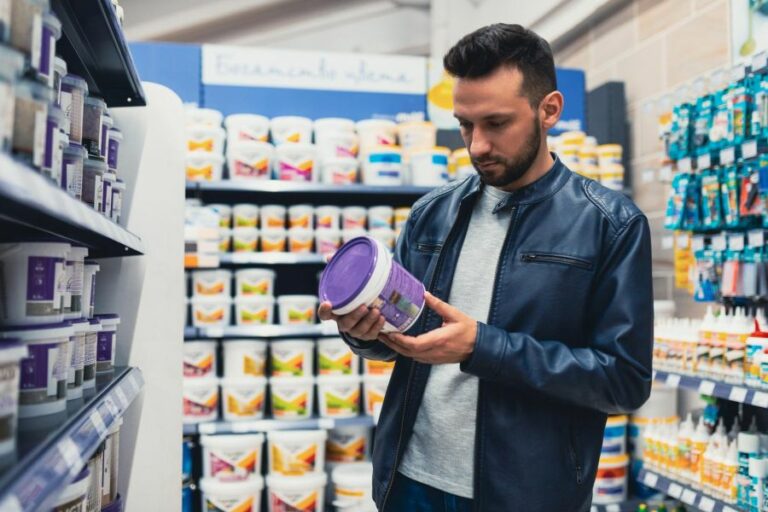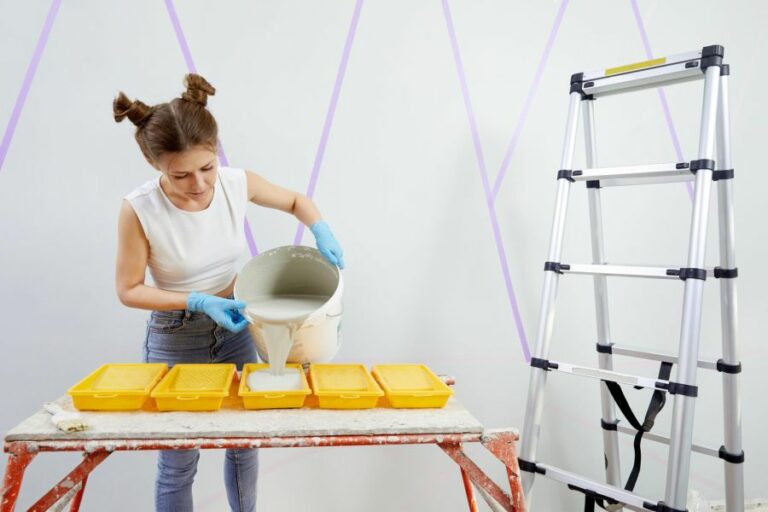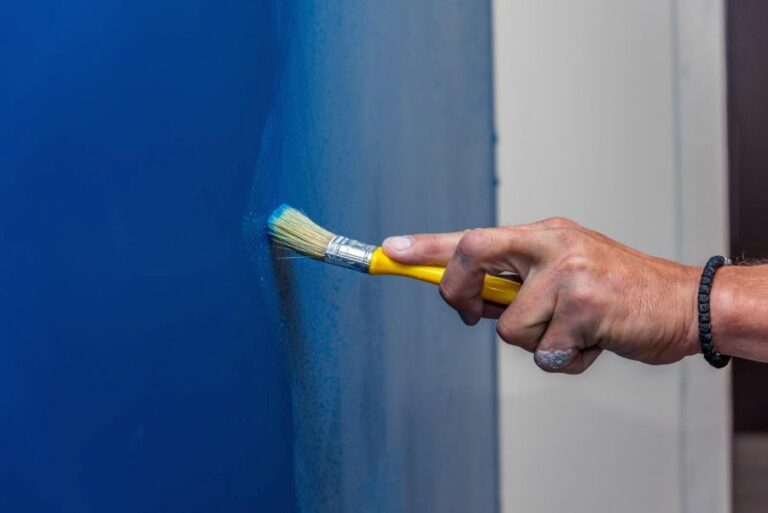Comparing Indoor Paint Finishes, 25 Things You Should Know
Choosing the right indoor paint finish can make all the difference when it comes to giving your walls a fresh and stylish look. Thankfully, you’re in good hands as I’ll provide you with essential information to help make that decision easier.
Comparing indoor paint finishes:
When comparing indoor paint finishes, consider matte, eggshell, satin, semi-gloss, and high-gloss. Matte is best for low-traffic areas with a non-reflective finish. Eggshell offers versatility and is suitable for moderately-trafficked areas. Satin is durable and moisture-resistant, ideal for kitchens and bathrooms. Semi-gloss is resilient and suitable for high-traffic areas, while high-gloss is bold and glossy, suitable for statement pieces.

Dive into the world of paint finishes as we compare indoor options such as matte, eggshell, satin, semi-gloss, and gloss. Discover which is best suited for your project and how each one impacts the look and feel of a space. Intrigued? Read on for all the details!
Contents
- 1 Analyzing Different Interior Paint Finishes
- 2 Preferred Paint Finish by Expert Painters
- 3 Exploring the 5 Grades of Paint Finishes
- 4 Eggshell Vs. Satin: Which is Ideal for Wall Painting?
- 5 Popular Living Room Wall Paint Finishes
Analyzing Different Interior Paint Finishes
Choosing the right paint finish (also known as sheen) is essential when it comes to protecting your walls and creating the desired look in your home. With several options to choose from, it is crucial to understand the pros and cons of each finish, along with their recommended uses.
• Matte Finish: Subtle and Sophisticated
Matte paint has the lowest sheen level, giving it a non-reflective, velvety texture. It is an excellent choice for hiding imperfections on your walls, as it doesn’t reflect light. Matte finish is well-suited for areas with lower traffic and does an excellent job at covering marks and blemishes.
Pros:
- Hides surface imperfections
- Rich, deep color
- Minimizes glare
Cons:
- Can be difficult to clean
- Not as durable as other finishes
Expert Recommendation: Matte finish is recommended for low-traffic areas such as bedrooms, dining rooms, and living rooms, where durability is less of a concern.
For more information on matte finish and its properties, visit the Paint Quality Institute.
• Eggshell Finish: Balanced and Versatile
As the name implies, an eggshell finish mimics the slight sheen found on an egg’s shell. It is more durable and easier to clean than matte paint but still provides a relatively flat appearance. This makes it suitable for various applications, particularly in moderately-trafficked areas.
Pros:
- Good durability
- Easy to clean
- Covers surface imperfections
Cons:
- Can reveal application flaws
- Not as durable as higher sheen finishes
Expert Recommendation: Ideal for family rooms, hallways, and children’s bedrooms, an eggshell finish strikes a balance between durability and a subtle sheen.
• Satin Finish: Smooth and Durable
Sitting in the middle of the sheen spectrum, the satin finish offers a slightly glossy appearance with increased durability. It is easier to clean than matte or eggshell finishes, allowing it to withstand more wear and tear. The satin finish is also moisture-resistant, making it suitable for areas prone to humidity.
Pros:
- Durable and easy to clean
- Moisture resistant
- Works well in high-traffic areas
Cons:
- Can show application flaws
- Reflects more light, revealing imperfections
Expert Recommendation: Opt for a satin finish in areas like kitchens, bathrooms, or playrooms, where durability and moisture resistance are essential.
• Semi-Gloss Finish: Bright and Resilient
As the name suggests, a semi-gloss finish provides a noticeable shine while still being less reflective than high-gloss paint. It is tough, durable, and can withstand repeated cleanings, making it suitable for high-traffic and high-moisture areas.
Pros:
- Very durable
- Easy to clean
- Resists moisture
Cons:
- Reflective surface can reveal imperfections
- Not recommended for large wall surfaces
Expert Recommendation: Semi-gloss is best used for trim, doors, and cabinets or high-humidity spaces such as bathrooms and laundry rooms, where durability is crucial.
• High-Gloss Finish: Bold and Glossy
High-gloss finishes provide a rich, reflective, and vibrant appearance. With excellent durability and moisture resistance, it can withstand repeated cleanings. However, its reflective quality will reveal any imperfections on the surface.
Pros:
- Highest durability and moisture resistance
- Easy to clean
- Makes a bold statement
Cons:
- Reflects light, highlighting surface imperfections
- Difficult to apply evenly
Expert Recommendation: Opt for high-gloss finishes on statement pieces like furniture, doors, or trim, where the bold appearance will enhance visual interest.
• Final Thoughts
Choosing the right paint finish for your project largely depends on the desired aesthetic, durability, and location within your home. Consider the pros and cons of each finish and their respective recommendations to ensure a successful result.
Additionally, always consult a professional painter or experienced DIYer for advice and guidance, especially for high-gloss applications or large surface areas, to achieve a flawless finish.
Preferred Paint Finish by Expert Painters
The finish a professional painter uses can vary greatly depending on the specific project and the desired final look.
• Flat Finish
A flat finish, also known as a matte finish, is the most basic type of paint finish. It reflects little to no light and provides a smooth, non-reflective surface. This type of finish is ideal for walls and ceilings in low-traffic areas where a simple, even color is desired.
Why Flat Finish?
- Hides imperfections well
- Easy to touch up
- Little to no shine
Where to Apply Flat Finish?
- Ceilings
- Low traffic areas
- Walls with imperfections
Flat finishes are not recommended for high-traffic areas or surfaces that require regular cleaning, as they can scuff and wear more easily than other finishes.
The US Department of Housing and Urban Development (HUD) recommends using flat finishes on ceilings and low-traffic areas.
• Eggshell Finish
Eggshell finishes provide a slight sheen, similar to the natural shine of an eggshell. They are preferable when you need a balance between durability and a soft, low-reflective appearance. This makes them a popular choice for common living areas and bedrooms.
Why Eggshell Finish?
- Slight sheen, soft appearance
- Increased durability compared to a flat finish
- Easy to clean
Where to Apply Eggshell Finish?
- Living rooms
- Bedrooms
- Hallways
• Satin Finish
A satin finish provides a medium-level sheen and is arguably the most versatile type of finish. It is more durable and easier to clean than both flat and eggshell finishes, making it a popular choice for high-traffic areas.
Why Satin Finish?
- Moderate sheen
- Easy to clean
- Durable
Where to Apply Satin Finish?
- Kitchens
- Bathrooms
- Trim and doors
The flexibility of satin finish means it can be used on almost any surface, from walls and ceilings to doors, trim, and moldings.
• Semi-Gloss Finish
A semi-gloss finish has a high sheen, reflecting more light than other finishes. This type of finish is commonly used in areas that require frequent cleaning or are exposed to moisture due to its durability and resistance.
Why Semi-Gloss Finish?
- High sheen
- Durable
- Resistant to moisture and stains
Where to Apply Semi-Gloss Finish? – Bathrooms – Kitchens – Cabinetry and furniture
Semi-gloss finishes are often recommended for baseboards and trim because they contrast well with walls featuring a lower-sheen finish.
• Gloss Finish
Gloss finishes provide the highest sheen of all options, reflecting the most amount of light. They are highly durable and resistant to wear, but their reflective nature also emphasizes any imperfections on the surface.
Why Gloss Finish?
- Highly reflective
- Durable
- Resistant to wear
Where to Apply Gloss Finish?
- Doors
- Cabinetry
- Furniture
Due to the strong contrast between a gloss finish and other finish types, gloss is often used as an accent, highlighting specific architectural features or design elements.
• Conclusion
The ideal finish for a painting project depends on factors such as the specific surface being painted, its level of exposure to wear and moisture, and the desired final appearance.
By considering these factors and the main properties of each finish type, you can confidently choose the right finish to achieve a professional result.
Exploring the 5 Grades of Paint Finishes
When it comes to painting, selecting the right paint finish is crucial. The level of finish directly impacts the overall appearance and durability of the paint job.
• 1. Flat or Matte Finish
A flat or matte finish is a paint finish that has little to no gloss, resulting in a smooth and subtle look. This type of finish does an excellent job of hiding imperfections on the surface, such as minor cracks and bumps, as it does not reflect light.
Consequently, it is an ideal choice for walls and ceilings with surface irregularities.
However, flat finish is not as durable as glossier finishes and can be difficult to clean. It’s prone to retain dirt and marks, making it less suitable for high-traffic areas or those that require frequent cleaning. It is recommended for low-traffic rooms like bedrooms and dining rooms.
For more information on matte finish, check this article from Pennsylvania State University.
• 2. Eggshell Finish
The eggshell finish strikes a balance between flat and glossy finishes, offering a low level of sheen. As the name suggests, it resembles the surface of an eggshell, not completely flat but also not too shiny.
This finish offers a more appealing look compared to a flat finish while still hiding surface imperfections quite well.
Eggshell finish is quite popular for residential walls due to its ability to be wiped clean with mild soap and water. It is more durable than the flat finish, which makes it a suitable option for living rooms and hallways.
• 3. Satin Finish
The satin finish offers a medium level of sheen, making it more lustrous than the eggshell finish but not as glossy as semi-gloss. This finish is highly durable, easy to clean, and can withstand moist environments, such as bathrooms and kitchens.
Its elegant appearance, combined with its easy-to-clean properties and resistance to mildew, make it a popular choice for walls, doors, and window trim.
However, it’s important to note that due to its sheen level, satin finish might highlight surface imperfections, so it’s recommended to use it on surfaces that are relatively smooth and well-prepared.
• 4. Semi-Gloss Finish
Semi-gloss finish has a higher sheen level compared to a satin finish, which makes it even more durable and moisture-resistant. This type of finish is perfect for areas with high humidity, such as bathrooms, laundry rooms, and kitchens.
In addition to its resistance to moisture, it’s also easy to clean and can withstand heavy scrubbing without harming the paint. Semi-gloss finish is highly recommended for surfaces that require frequent cleanings, such as cabinet doors, window sills, and baseboards.
However, due to its glossiness, it may not be the best choice for hiding surface imperfections.
• 5. High-Gloss Finish
The high-gloss finish is the most reflective and shiny of all paint finishes, making it highly durable and robust. This finish is resistant to stains, dirt, and moisture and is remarkably easy to clean.
Due to its mirror-like appearance, it is commonly used for painting doors, window frames, and trims, especially in modern and contemporary homes. However, applying a high-gloss finish requires precise preparation, as it will highlight imperfections and brush strokes if not done correctly.
It’s also not recommended for large wall surfaces, as it can create glare and be too bright in some settings.
For further details on choosing the perfect paint finish, refer to the “United States Environmental Protection Agency”; they offer helpful tips and guidelines for making an informed selection.
In conclusion, choosing the right paint finish is essential for achieving optimal results in any painting project. By understanding the characteristics, durability, and reflection levels of each paint finish, you can make an informed decision tailored to your specific needs and preferences.
Flat and matte finishes are best for hiding surface imperfections, while eggshell, satin, semi-gloss, and high-gloss finishes offer varying levels of sheen and durability, depending on the area and surface being painted.
Level | Paint Finish |
|---|---|
1 | Flat (Matte) |
2 | Eggshell |
3 | Satin |
4 | Semi-Gloss |
5 | Gloss (High-Gloss) |
Eggshell Vs. Satin: Which is Ideal for Wall Painting?
Choosing the right paint finish for your walls is an important step in any painting project. The finish not only affects the appearance of the painted surface, but it also determines how easily the paint can be cleaned and maintained.
Two popular paint finishes that are commonly used on walls are eggshell and satin.
• Understanding Eggshell and Satin Paint Finishes
Before diving into the comparison, it is essential to understand what eggshell and satin paint finishes are and how they differ from each other.
– Eggshell Paint Finish
An eggshell finish is named after the subtle sheen it exhibits, which is reminiscent of the surface of an eggshell.
This type of finish usually has a low sheen level of around 10-25%, which means that it reflects a small amount of light. The eggshell finish is a popular choice for living rooms, bedrooms, and dining rooms.
– Satin Paint Finish
A satin finish, on the other hand, has a slightly higher sheen level, usually around 25-35%. This makes it more reflective than the eggshell finish but still maintains a certain level of subtlety. Satin paint is often used in high-traffic areas such as hallways and bathrooms, as well as on trim and doors.
• Eggshell Vs. Satin: Comparing Key Features
Here is a comparison of the key features of eggshell and satin paint finishes, including durability, washability, and the type of walls they are best suited for.
– Durability
When it comes to durability, satin paint is slightly more robust than eggshell. Its higher sheen level means that it is more resistant to marks, smudges, and minor scuffs. Eggshell paints, with their lower sheen levels, are more prone to showing dirt and imperfections.
However, both finishes are suitable for general use in most rooms. If you have young children or pets, you may prefer the added durability provided by a satin finish.
– Washability
The washability of paint refers to how easily it can be cleaned. Satin paint finishes are generally more washable than their eggshell counterparts. The higher sheen level of satin paint makes it better at resisting stains, and it can withstand repeated cleaning without losing its original appearance.
Eggshell finishes can also be cleaned, but they may not hold up as well to repeated washing, especially if the surface is subjected to harsh cleaning agents or scrubbing.
– Suitability for Different Wall Types
Both eggshell and satin paint finishes are versatile and can be used on various wall types. However, their differing sheen levels affect how they react to different surfaces and lighting conditions.
Eggshell finishes are ideal for walls with imperfections or uneven texturing, as the low sheen can help to mask minor flaws. If you have an older home with walls that are not perfectly smooth, an eggshell finish may be a better choice.
Conversely, satin finishes are more suitable for walls with fewer imperfections, as the higher sheen can highlight any irregularities present in the wall.
• To Consider Before Making a Decision
There are several factors that you should consider when deciding between eggshell and satin paint finishes for your walls. Some of these factors include:
- Room usage: Consider the room’s purpose and how much wear and tear the walls are likely to experience. Satin finishes are recommended for high-traffic areas, while eggshell finishes are more suited for areas with less activity.
- Lighting: The lighting in the room can greatly affect the appearance of your paint finish. Brightly lit rooms can make satin finishes appear more reflective, while dimmer rooms can make an eggshell finish seem less shiny.
- Personal preference: Ultimately, the choice between eggshell and satin paint finishes comes down to personal preference. If you prefer a more subtle, understated look, eggshell may be the right choice for you. Alternatively, if you like the idea of a slightly higher sheen, you may prefer a satin finish.
• Conclusion: Eggshell Vs. Satin
There is no definitive answer to whether eggshell or satin paint is better for your walls, as each option has its respective advantages and disadvantages.
Eggshell finishes provide a more subtle look and can help to hide surface imperfections, while satin finishes offer better durability and washability, making them ideal for high-traffic areas.
When weighing the pros and cons of eggshell and satin paint finishes, it is essential to consider the specific needs of your space and your personal preferences.
For further guidance, you can consult the Paint Quality Institute, which provides valuable information on different paint finishes and their respective merits. By considering all of these factors, you can confidently make the right choice for your walls, ensuring a beautiful and long-lasting result.
Popular Living Room Wall Paint Finishes
In order to create a stunning, well-designed living room, one must consider various factors such as furnishing, wall color, and lighting. An essential aspect of achieving a beautiful living room is the choice of paint finish.
• The Popularity of Eggshell Paint Finish
The eggshell paint finish is widely regarded as the most common paint finish for living room walls. It is a popular choice due to its ability to cover a multitude of imperfections and its phenomenal balance between durability and aesthetic appeal.
An article by Yale University* discusses the versatility of eggshell paint finish and its aptness for use not only in living rooms but also in other areas of the house.
– What is an Eggshell Paint Finish?
To understand the popularity of eggshell paint finish, it is vital first to understand its composition and appearance. The finish is named after the resemblance of its sheen to that of an actual eggshell.
Although it is not as Glossy as high-gloss and semi-gloss finishes, it still has a slight sheen that reflects light, making it an excellent choice for living room walls.
Eggshell paint finish can be described as a low-luster paint that provides a subtle, elegant appearance. It is often considered the ideal compromise between a matte finish, which hides imperfections, and a glossier finish, which is more durable and easier to clean.
– Why Choose Eggshell Paint Finish for Living Room Walls?
There are several reasons why eggshell paint finish is the most common choice for living room walls. Some of these reasons include:
Durability
The eggshell paint finish is known for its durability, making it an ideal choice for busy households. Its wear and tear resistance can withstand scuffing, making it perfect for high-traffic areas such as the living room.
Easy to Clean
The eggshell paint finish is easy to clean due to its slight sheen. Its smooth surface allows you to wipe off dirt, fingerprints, and other marks with ease.
Excellent Coverage
An added bonus of using an eggshell paint finish is the coverage it provides. The finish is adept at covering up imperfections and irregularities, such as uneven surfaces or small cracks, which are common with living room walls.
Aesthetic Appeal
The subtle sheen of eggshell paint finish gives living room walls a sophisticated and elegant appearance. It provides a perfect balance of sheen and flatness, reflecting light and creating the perfect ambiance for your living space.
• How to Apply Eggshell Paint Finish
Applying eggshell paint finish to your living room walls is relatively simple. Here are some tips on how to achieve the perfect eggshell finish:
– Preparation
Before starting the painting process, make sure the walls are clean and free of any dust, dirt, or grease. This will ensure that the paint adheres well to the surface.
– Primer
It is essential to apply a primer before painting your living room walls, especially if the walls are porous or you’re changing from a dark to a light color. The primer will seal the surface and provide an even base for the paint to adhere.
– Painting Technique
When applying the eggshell paint finish, it is important to use a high-quality roller or brush. Dip the brush or roller into the paint and remove the excess by lightly pressing it against the side of the paint bucket.
Start by applying the paint in a “W” or “M” pattern, then fill in the gaps with even strokes. Take your time to avoid streaks or unevenness.
– Drying Time
Allow the first coat of eggshell paint finish to dry completely, according to the manufacturer’s instructions. Once the first coat is dry, lightly sand the surface to remove any imperfections or debris. Apply a second coat of paint for full coverage and let it dry completely before reassembling the room.
• Conclusion
Eggshell paint finish provides an unbeatable balance between durability and aesthetic appeal, making it the most common paint finish for living room walls. Its resilience to wear and tear, ease of cleaning, and ability to cover wall imperfections make it an ideal choice for homeowners and interior designers.
Follow the tips provided above to achieve a flawless eggshell finish in your living space and enjoy the sophisticated ambiance it creates.
Question | Answer |
|---|---|
What is the most common paint finish for living room walls? | Matte or eggshell finish |
• Introduction
The type of paint finish you choose for your interior walls can have a significant impact on the overall look and feel of your space. With so many options available, it’s essential to understand the differences between finishes and their best applications.
• Flat/Matte Finish
Flat or matte paint finishes have no shine or gloss, making them a popular choice for hiding imperfections on walls. The lack of sheen allows the paint to absorb light, helping to create an even and uniform surface better.
Best for: Bedrooms, living rooms, and other low-traffic areas where you want a cozy and intimate atmosphere.
Pros:
- Hides imperfections
- Reduces glare
- Even light absorption
Cons:
- Less durable
- Not easy to clean
• Eggshell Finish
Eggshell finishes fall between flat and satin sheens, offering a slightly smoother surface with more durability. It’s named for the soft luster it imparts, reminiscent of an actual eggshell.
Best for: Low-traffic areas like bedrooms, hallways, and family rooms where a subtle balance of a soft sheen and durability is desired.
Pros:
- Easy to clean
- Slightly more durable than flat/matte finish
- Conceals some imperfections
Cons:
- Not as durable as satin or gloss finishes
• Satin Finish
Satin finishes have a medium sheen that provides both durability and easy cleanability. It’s a versatile finish that works well in most areas of your home, but it does tend to show more imperfections on the wall surface compared to flat/matte or eggshell finishes.
Best for: Kitchens, bathrooms, windowsills, and other areas where a balance of durability and cleanability is necessary.
Pros:
- Durable
- Easy to clean
- More resistant to mildew and moisture than flat or eggshell finishes
Cons:
- Can show imperfections in the wall surface
• Semigloss Finish
Semigloss finishes offer a higher sheen than satin, making them an excellent choice for areas where you want to add some visual interest or draw attention to architectural details. Thanks to their increased durability and resistance to moisture, they work well in high-humidity areas.
Best for: Kitchens, bathrooms, and other areas with high humidity or moisture, as well as for highlighting trim, baseboards, and crown molding.
Pros:
- Highly durable
- Easy to clean
- Resistant to moisture and mildew
Cons:
- Shows imperfections more than lower sheen finishes
• Gloss Finish
Gloss finishes provide the highest shine of all paint finishes, offering excellent durability and easy cleanability. While they can add a dramatic and sophisticated look to a room, they also show every imperfection on the wall surface.
Best for: High-use areas like kitchens and bathrooms or in spaces where a striking visual impact is desired.
Pros:
- Highly durable
- Easy to clean
- Adds visual interest
Cons:
- Shows every imperfection in the wall surface
• Expert Recommendations
Based on years of experience, these are some general recommendations to help you choose the right paint finish for your interior walls:
- For a cozy and intimate feel in low-traffic areas like bedrooms and living rooms: Flat/Matte finish
- For a balance of soft sheen and durability in low-traffic areas like hallways and family rooms: Eggshell finish
- For durability and easy cleanability in high-traffic areas like kitchens, bathrooms, and windowsills: Satin finish
- For highlighting trim, baseboards, and crown molding or in high-humidity areas: Semigloss finish
- For visual impact and drama in high-use spaces or where a bold statement is desired: Gloss finish
Additionally, it’s essential to select paints with good quality, as this can greatly affect the performance and appearance of your paint finish.
For more information on selecting the right paint, visit the ConsumerReports.org website, where you can find paint recommendations based on performance, durability, and price range.
• Conclusion
Whether you’re painting a bedroom, kitchen, or bathroom, choosing the right paint finish can make all the difference in creating a beautiful and inviting atmosphere in your home.
Evaluate the specific needs of your space and reference the recommendations provided above to select the perfect finish for your interior walls, ensuring a stunning result that will last for years to come.
Finish Type | Best For | Characteristics |
|---|---|---|
Flat/Matte | Low-traffic areas, bedrooms, living rooms | No shine, hides imperfections, difficult to clean |
Eggshell | Low-traffic areas, dining rooms, hallways | Slight sheen, hides some imperfections, moderately washable |
Satin | Moderate-traffic areas, kitchens, kids’ rooms | Smooth finish, easy to clean, more durable |
Semi-Gloss | High-traffic areas, bathrooms, trim | Glossy finish, very easy to clean, more durable |
Gloss | Doors, cabinets, trim | Highly reflective, easy to clean, durable, may highlight imperfections |

